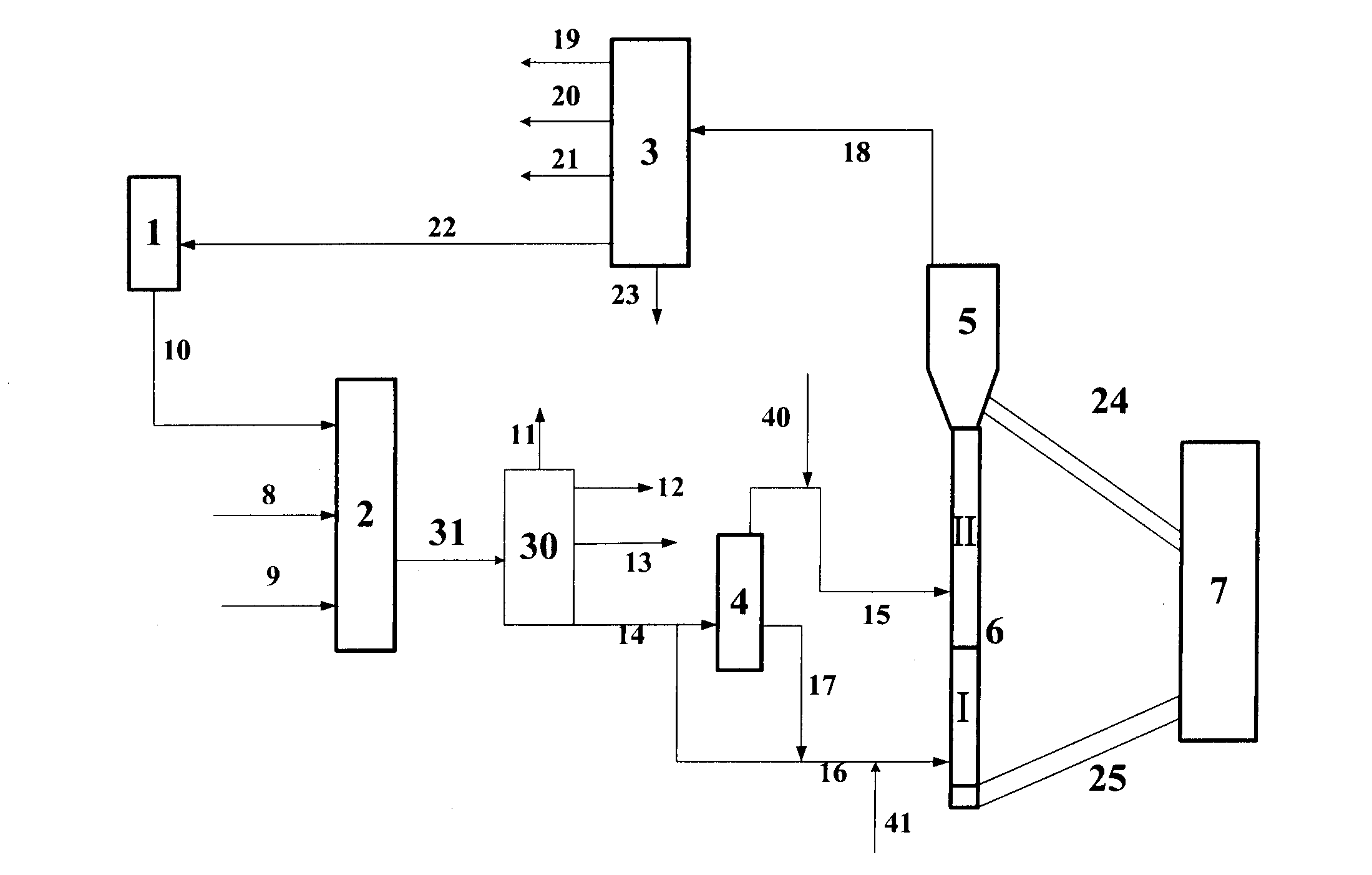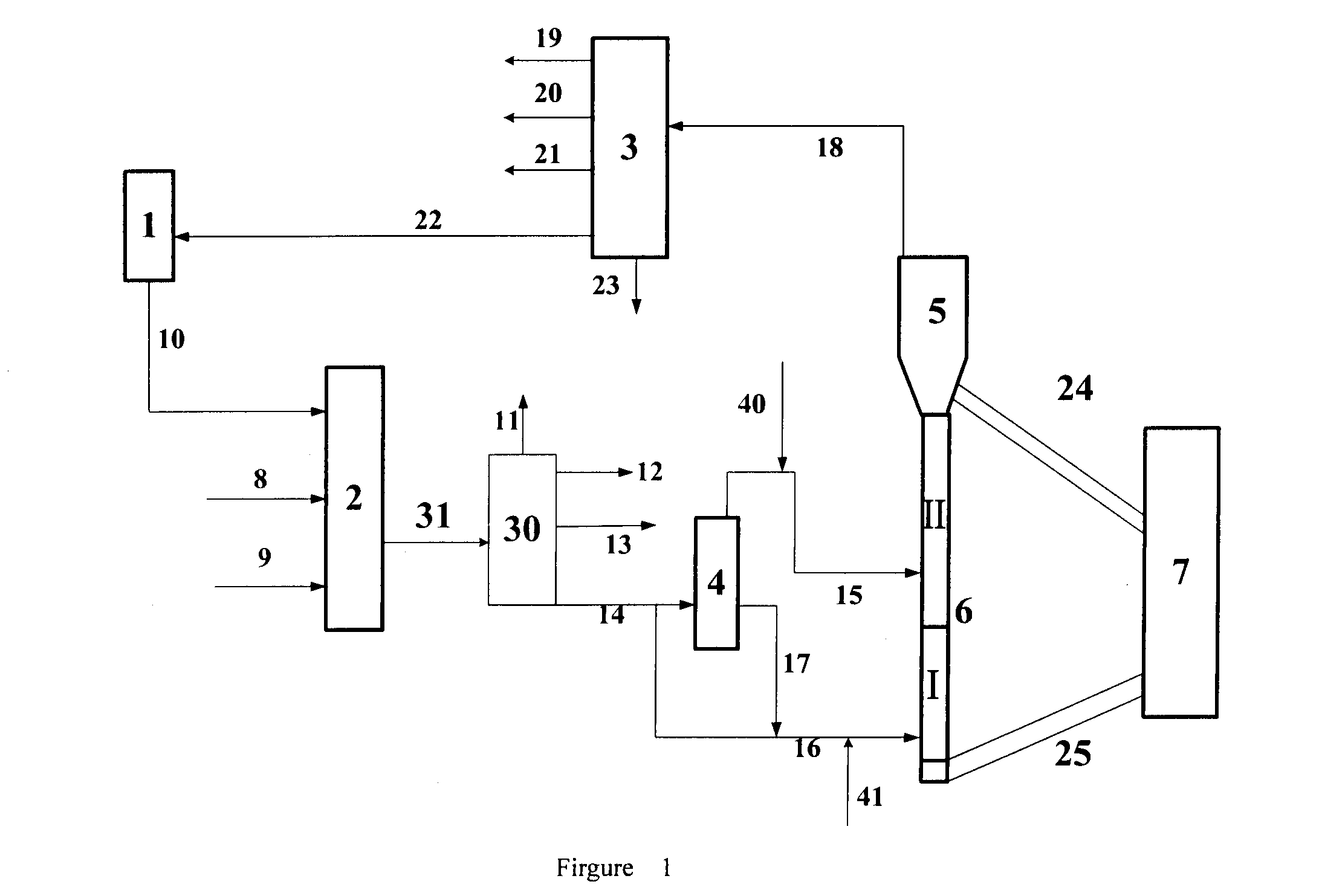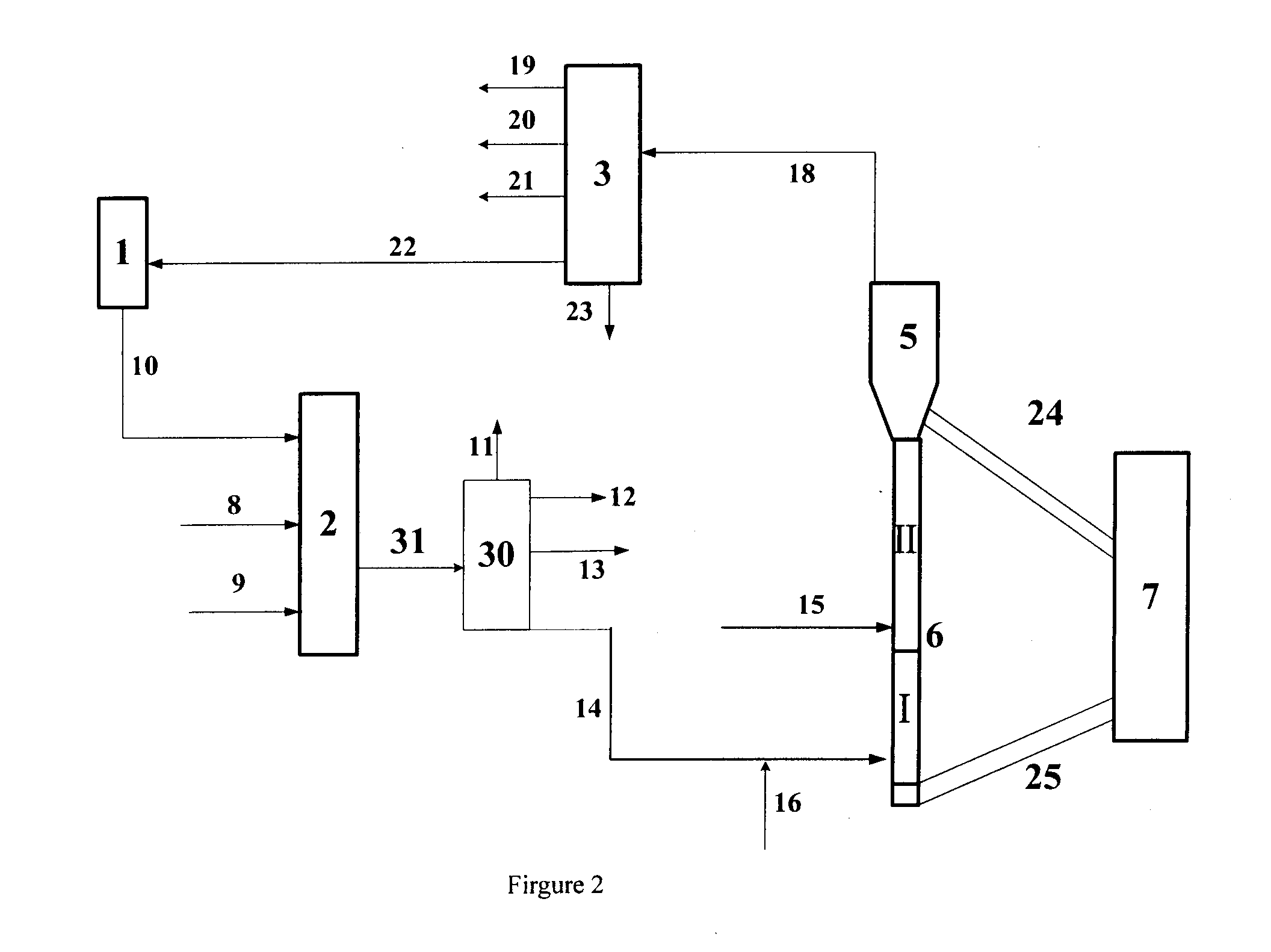Combined process of hydrotreating and catalytic cracking of hydrocarbon oils
a hydrotreating and hydrocarbon oil technology, applied in the field of hydrocarbon oil conversion, can solve the problems of increasing the need for light oils, increasing the need for heavy fuel oils, so as to improve the yield of light oil, suppress the catalyst's activity, and enhance the conversion depth
- Summary
- Abstract
- Description
- Claims
- Application Information
AI Technical Summary
Benefits of technology
Problems solved by technology
Method used
Image
Examples
example 1
[0091]This example illustrates the effect of the process provided by the present invention.
[0092]In this example, feedstock oil A is used as the feedstock oil to introduce into hydrotreating reaction equipment, and the reaction conditions of hydrotreating reaction and products' distribution of oils produced by hydrotreating are shown in Table 2. Light oil fraction (55% by weight, based on the total weight of hydrogenated tail oil) and heavy oil fraction (i.e. the bottom heavy oil, 45% by weight, based on the total weight of hydrogenated tail oil) of hydrogenated tail oil are produced by vacuum distillation, respectively, and the properties of these two fractions are shown in Table 3. Said heavy oil fraction of hydrogenated tail oil is introduced into catalytic cracking reaction zone I, whereas said light oil fraction of hydrogenated tail oil is introduced into catalytic cracking reaction zone II. They contact catalytic cracking catalysts for reaction respectively. The catalytic crac...
example 2
[0094]This example illustrates the effect of the process provided by the present invention.
[0095]In this example, feedstock oil B is used as the feedstock oil to introduce into hydrotreating reaction equipment, and the reaction conditions of hydrotreating reaction and products' distribution of oils produced by hydrotreating are shown in Table 2. Light oil fraction (39% by weight, based on the total weight of hydrogenated tail oil) and heavy oil fraction (i.e. the bottom heavy oil, 61% by weight, based on the total weight of hydrogenated tail oil) of hydrogenated tail oil are produced by vacuum distillation, respectively, and the properties of these two fractions are shown in Table 3. Said heavy oil fraction of hydrogenated tail oil is introduced into catalytic cracking reaction zone I, whereas said light oil fraction of hydrogenated tail oil is introduced into catalytic cracking reaction zone II. They contact catalytic cracking catalysts for reaction respectively. The catalytic crac...
example 3
[0099]This example illustrates the effect of the process in accordance with the scheme showed in FIG. 2.
[0100]In this example, feedstock oil A is used as the feedstock oil to be introduced into hydrotreating reaction equipment, and the reaction conditions of hydrotreating reaction and products' distribution of oils produced by hydrotreating are shown in Table 2. Hydrogenated tail oil produced herein is named as hydrogenated tail oil C, and feedstock E is a conventional catalytic cracking feedstock. Hydrogenated tail oil C is 20% by weight and feedstock E is 80% by weight, respectively, based on the total weight of the feedstock. Light oil fraction H (which has a distillation range from 350 to 500° C., and is 44% by weight, based on feedstock E) and heavy oil fraction G (which has a distillation point higher than 500° C., and is 56% by weight, based on feedstock E) of catalytic cracking feedstock oil are obtained by vacuum distillation of feedstock E, respectively. The properties of ...
PUM
| Property | Measurement | Unit |
|---|---|---|
| boiling point | aaaaa | aaaaa |
| boiling point | aaaaa | aaaaa |
| pressure | aaaaa | aaaaa |
Abstract
Description
Claims
Application Information
 Login to View More
Login to View More - R&D
- Intellectual Property
- Life Sciences
- Materials
- Tech Scout
- Unparalleled Data Quality
- Higher Quality Content
- 60% Fewer Hallucinations
Browse by: Latest US Patents, China's latest patents, Technical Efficacy Thesaurus, Application Domain, Technology Topic, Popular Technical Reports.
© 2025 PatSnap. All rights reserved.Legal|Privacy policy|Modern Slavery Act Transparency Statement|Sitemap|About US| Contact US: help@patsnap.com



